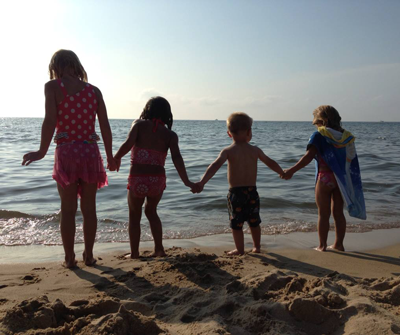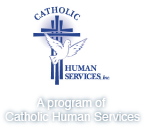Steps for Prospective Adoptive Couples
1. Information Gathering – Adoption is a much more complicated subject than most people realize. There are many questions to answer and decisions to make. Are we really ready? What form of adoption do we prefer? What is the best agency for us? For our part, we will be glad to mail you a packet of information and answer your questions by phone or email.
2. Orientation Meeting – If, after taking a look at CHS, you’re interested in exploring our program further, the next step would be to schedule an orientation session with us. We will sit down with you as a couple to describe the philosophy, policies, and practices of the agency, and answer your questions. There is no cost for this meeting.

3. Pre-Application Education Series – Still interested? The next step would be to attend three two-hour classes with other interested couples to zero in on the contemporary adoption scene, explore further our values-based approach, and hear from people who have lived the program. Many have remarked that these classes have been the most valuable part of their preparing to adopt.
4. Intake – Now that you’ve gotten to know us, it’s our turn to get to know you. After the classes, the intake process calls for each couple to meet with the adoption social worker for a standardized two-hour interview that takes a comprehensive look at your experience, values, and motivation. The worker usually will admit the couple into the program at the end of the interview. If there are reservations about admission, the worker would confer further with other staff about any specific issues of concern.
5. Pre-placement Assessment (Home Study) – Usually the process consists of four or five 90-minute sessions in your home to cover such issues as motivation, marriage, family life, parenting style, and attitudes about adoption. You prepare worksheets on these subjects prior to discussing them with your social worker. Applicants are required to get fingerprinted for criminal and child abuse background checks, and we follow up with persons listed as your references. Reports substantiating good health of all members of your family must be received from your doctor. Once all the information is gathered, a formal decision to approve or not approve you for adoption is made.
6. Create Portfolio and Join the Pool – Families usually begin assembling materials for their “representational portfolio” during the home study process. The agency provides the instructions and forms, and you are able to peruse others’ portfolios for ideas. Once your portfolio is completed and the home study is finished, you are welcomed into our pool of prospective couples and are available to be chosen.
7. Join Study Group while Waiting – Instead of casting couples adrift and by themselves during the time of waiting, we all convene about every 10 weeks for support, program updates, special guests, and good food. These meetings are very cordial and help people feel “plugged in.” It is important for all of us to work together to make the time of anticipation meaningful and constructive.
8. Selected – This is “The Call” notifying you that you have been chosen. Sometimes the call is made by the birthmother and, needless to say, the phone conversation creates quite a stir. Arrangements are made for everyone to meet one another soon.
9. “No Obligation Meeting” – This first meeting can happen at any convenient location, and an adoption worker is there to serve as “ice breaker” and facilitate discussion. Birth and adoptive families usually enter these meetings with high anxiety but leave feeling relaxed and quite relieved. If the meeting goes poorly (a very rare event) and either the birth or adoptive family decides they do not want to go forward, the birth mother would be free to choose a different couple and the adoptive family would remain in the pool of available couples.
10. “Vision Merging Meeting” – If the initial meeting went well, a planning session is scheduled where the “visions” of the birth and adoptive families for their ongoing relationship are melded and formed. Plans are made for how you and the birth family will interact during the rest of the pregnancy, how the hospital experience will work, and the nature and frequency of visits, calls, emails, etc. for the future. Plans are never set in stone, but serve as a beginning foundation as relationships evolve.
11. Placement – Almost all plans call for adoptive couples to be involved in the hospital, and it is an exciting opportunity for the family to start their relationship with the baby. Once the infant is discharged from the hospital, he or she is placed in temporary care with you at home pending a consent hearing in three to six weeks. This is a precious, yet precarious time as the birth mother may have a change of heart and request the baby’s return. If she determines to proceed with the adoption plan, the birth mother gives her consent before a judge and her parental rights are terminated. After the hearing, she has a three-week period to appeal only if there had been extraordinary pressures on her (such as blackmail) and were unknown to us. It is extremely rare that a judge would overturn an adoption. After the consent hearing, the baby is made a ward of the court and put in a “formal placement” with you until finalization. The final adoption hearing usually occurs about three months after consent when you become your child’s legal parents.

